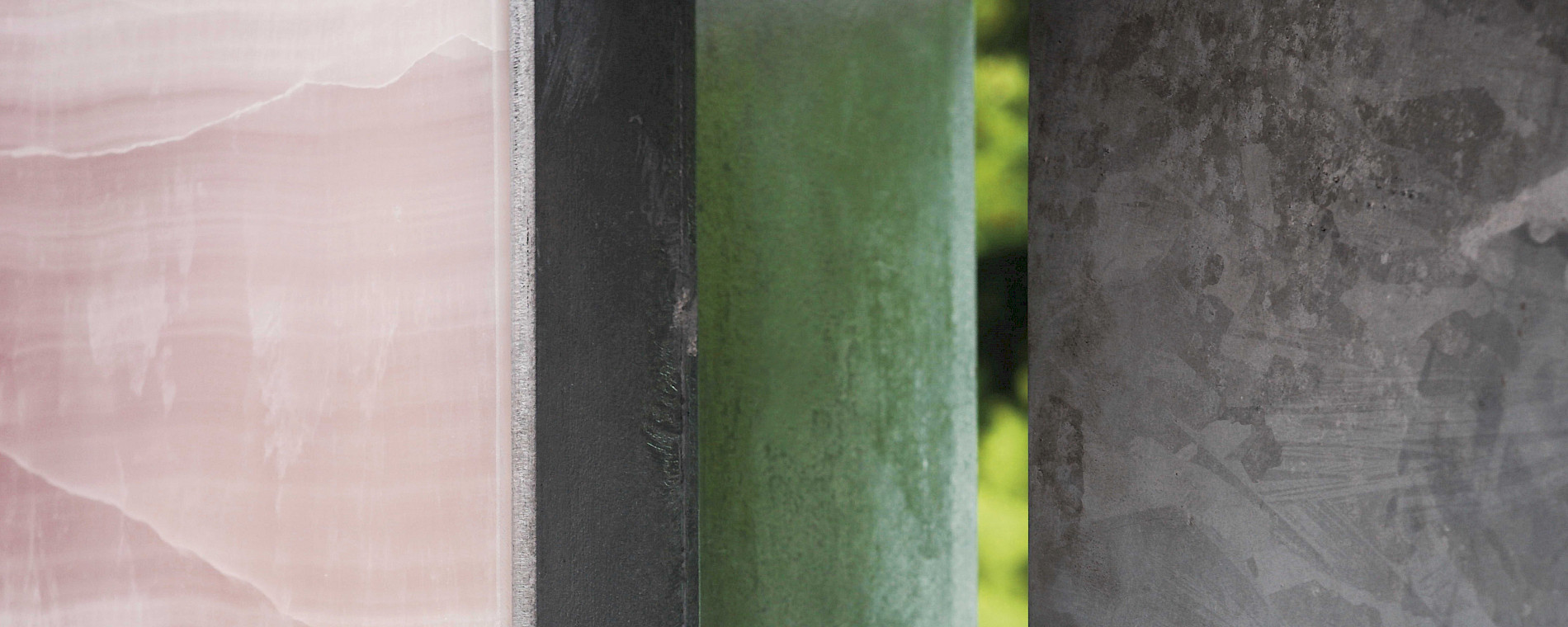ART CITIES:Frankfurt-Cyprien Gaillard
 Between iconoclasm and minimal aesthetics, romanticism and Land Art, the work of Cyprien Gaillard questions man’s traces in nature. Through sculpture, painting, etching, photography, video, performance and large scale interventions in public space, Gaillard has established himself as a major emerging artist on the international art scene. Concerned with the wreckage of modernity and the intersections between human artefacts, urban geography and psychology, the artist’s work embraces a poetry of entropy that rearranges history to shed new light on the present.
Between iconoclasm and minimal aesthetics, romanticism and Land Art, the work of Cyprien Gaillard questions man’s traces in nature. Through sculpture, painting, etching, photography, video, performance and large scale interventions in public space, Gaillard has established himself as a major emerging artist on the international art scene. Concerned with the wreckage of modernity and the intersections between human artefacts, urban geography and psychology, the artist’s work embraces a poetry of entropy that rearranges history to shed new light on the present.
By Dimitris Lempesis
Photo: MMK Stiftung Archive
Many of Gaillard’s works combine disparate landscapes or architectures from different times and spaces to reveal unexpected correlation. Cyprien Gaillard conceived “Frankfurter Schacht” (2021) specifically for this site in the Taunusanlage Park in Frankfurt am Main. At the edge of the Wallanlagen* green belt (the former rampart that used to separate the city center from its outlying districts) a gray ventilation shaft stands among the various monuments and memorials between the financial and red-light districts. Only inside the shaft does the sculpture come into view. Surrounded and protected by pink, and in the gentle flow of air and water, the view opens into the sky. Accessible day and night for everyone, the shaft closes if needed. Every public space is political; every public space is social. The idea at its core is its free accessibility and individual utilization. It is designed and organized by the public sector: in this case the parks commission, the office of public monuments, and the municipal museum. Once realized, its use is wholly individual and can depart from how it was imagined. Cyprien Gaillard concerned himself with this site over a period of two years and created a sculpture that neither pays homage nor commemorates, neither extols nor warns, but simply serves. In the midst of the public space, it offers a place of intimacy.
Cyprien Gaillard was born in 1980 in Paris, studied at the L’Ecole Cantonale d’Art de Lausanne, and is Winner of the Marcel Duchamp Prize in 2010. Many of Gaillard’s works combine disparate landscapes or architectures from different times and spaces to reveal unexpected correlations. His six-part 35mm film and photo series “Real Remnants of Fictive Wars” (2003–08) captures slow-moving fire extinguisher emissions engulfing urban sites and monuments including Robert Smithson’s legendary “Spiral Jetty” (1970). Sculptural interventions have involved his excavation of a buried German military bunker on the Dutch coast to make it accessible to visitors, or threading scrapped excavator shovels with smooth, minimal rods made of such millennia-old geological materials as onyx and calcite. Gaillard’s social sculpture “The Recovery of Discovery” (2011) encouraged Berlin museum-goers to sit on a high pyramid of boxes filled with Turkish-brewed Efes beer and demolish it in a weeks-long binge drinking session—a gesture evoking the trauma of colonization and cultural asset appropriation that echoes in many museum artifacts. Polaroid photo series including “Fields of Rest” (2009), “Geographical Analogies” (2009), and “Sober City” (2015) juxtapose pictures of historical and modern ruins, or superimpose shots of New York City with crystalline images of an amethyst. Complex video and film works including “Desniansky Raion” (2007), “Pruitt-Igoe Falls” (2009), “Cities of Gold and Mirrors” (2009), “Nightlife” (2015) or “Ocean II Ocean” (2019) form the gravitational center of Gaillard’s oeuvre. Video footage showing the controlled demolition of modern residential and office blocks is intercut with nighttime footage of Niagara Falls. Russian hooligans brawl in front of high-rise housing projects for the “New Soviet man”. American college students swig tequila in front of brutalist, pyramidal hotels in the Mexican city of Cancún while the ritual dance of a gang from L.A. is performed in a real Mayan ruin a few meters away.
* The Wallanlagen is a park area in Frankfurt which forms a five-kilometre-long green belt around the city centre. The parklands run along the course of the former city walls, which were built from the 14th century and which were torn down in the early 19th century. The former course of the city wall was landscaped as a park between 1804 and 1812.
Photo: Cyprien Gaillard, Frankfurter Schacht (detail), 2021, Production for the Frankfurter Positionen 2021, Photo: Max Paul, Courtesy the artist and MMK Stiftung
Info: The sculpture is situated between Taunusanlage S-Bahn station entrances 3 and 4, opposite the address Taunusanlage 12, Frankfurt am Main, Germany, Duration: 29/5/2021- , Days & Hours: Daily 00:00-24:00



